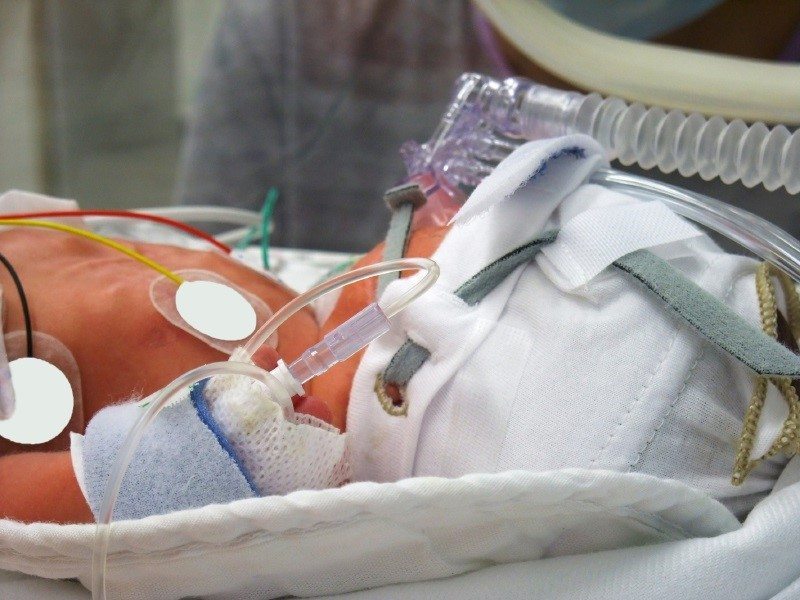Hypoxic Ischemic Encephalopathy (HIE; Birth Asphyxia) Attorneys in Ann Arbor, Michigan
Hypoxic ischemic encephalopathy (HIE), commonly referred to as neonatal encephalopathy (NE) or birth asphyxia, is a form of brain injury that occurs when an infant experiences oxygen deprivation shortly before, during or shortly after birth. In cases of hypoxic ischemic encephalopathy, fetal oxygen deprivation may result from decreased oxygen levels in the blood (a complication known as hypoxia or hypoxemia) and/or decreased oxygen flow to the brain (a complication known as ischemia). People with hypoxic ischemic encephalopathy may experience side effects and associated injuries including cerebral palsy (CP), motor function impairments, developmental delays, seizure disorders and epilepsy, cognitive impairments, neurodevelopmental impairments, and even death.
 Ann Arbor is home to a variety of effective, nationally-recognized HIE treatment and therapy programs, services, and facilities. However, these supportive treatment and therapy options are expensive and often financially out of reach for individuals with hypoxic ischemic encephalopathy and their families. At Michigan Cerebral Palsy Attorneys, our Ann Arbor, Michigan hypoxic ischemic encephalopathy (HIE) lawyers urge the families affected by HIE and birth trauma seek financial compensation—if you believe your loved one’s hypoxic ischemic encephalopathy diagnosis was a result of medical malpractice, call us toll-free at (888) 592-1857 or fill out our online contact form. An HIE attorney from our birth injury law firm will provide you with a free legal consultation and inform you of your legal options. If our HIE lawyers take your case, we will not charge you anything unless we win.
Ann Arbor is home to a variety of effective, nationally-recognized HIE treatment and therapy programs, services, and facilities. However, these supportive treatment and therapy options are expensive and often financially out of reach for individuals with hypoxic ischemic encephalopathy and their families. At Michigan Cerebral Palsy Attorneys, our Ann Arbor, Michigan hypoxic ischemic encephalopathy (HIE) lawyers urge the families affected by HIE and birth trauma seek financial compensation—if you believe your loved one’s hypoxic ischemic encephalopathy diagnosis was a result of medical malpractice, call us toll-free at (888) 592-1857 or fill out our online contact form. An HIE attorney from our birth injury law firm will provide you with a free legal consultation and inform you of your legal options. If our HIE lawyers take your case, we will not charge you anything unless we win.
The Signs, Symptoms, and Diagnosis of Hypoxic Ischemic Encephalopathy
Detecting HIE in Ann Arbor, Michigan
Signs and Symptoms of Hypoxic Ischemic Encephalopathy
While some signs and symptoms of birth asphyxia may appear right after the baby is born, others may not become evident until later in the child’s life. Some of the common clinical signs and symptoms of HIE include:
- Speech, language, and communication delays or challenges
- Motor skill impairments or challenges
- The need for infant resuscitation after delivery
- The absence of brain stem reflexes: Two common brain stem reflex abnormalities in victims of HIE relate to breathing and response to light.
- Apgar scores remain low for more than five minutes: Apgar scoring is a basic diagnostic tool used assess a newborn baby’s overall health in the first few minutes after birth.
- Hypotonia (low muscle tone) and severe limpness
- Feeding challenges, including the inability to latch, suck, or swallow
- Mixed or profound metabolic acidemia in the umbilical artery blood sample: This clinical sign indicates acidity in the blood, which means a hypoxic ischemic event likely occurred.
Diagnosing Hypoxic Ischemic Encephalopathy
Ann Arbor, Michigan hospitals (including University Hospital, C.S. Mott Children’s Hospital, and Von Voigtlander Women’s Hospital) have the facilities and resources necessary to provide thorough diagnoses of hypoxic ischemic encephalopathy. Diagnostic tests for HIE include CT scans, MRI scans, echocardiograms, evoked potential tests, arterial blood gas tests, blood glucose level testing, ultrasounds, and EEGs.
The Causes of Hypoxic Ischemic Encephalopathy
Ann Arbor, Michigan Hypoxic Ischemic Encephalopathy (HIE) Lawyers Explain HIE and Malpractice
Hypoxic Ischemic Encephalopathy is a form of brain injury that is caused by a restriction of oxygen (hypoxia) and/or blood (ischemia) to the brain. As HIE research matures, prospective studies using MRI procedures show that over 3 in 4 cases of hypoxic ischemic encephalopathy occur during or near the time of labor and delivery—these instances are known as intrapartum HIE. Below we’ve listed three categorizations for the types of injuries that cause hypoxic ischemic encephalopathy in babies:
 Partial Prolonged Asphyxia: In instances of partial prolonged asphyxia, the period of oxygen deprivation typically lasts for a half hour. The following pregnancy and delivery complications are known causes of partial prolonged birth asphyxia:
Partial Prolonged Asphyxia: In instances of partial prolonged asphyxia, the period of oxygen deprivation typically lasts for a half hour. The following pregnancy and delivery complications are known causes of partial prolonged birth asphyxia:
- Umbilical cord complications such as umbilical cord compression and nuchal cords: These interfere with the passage of oxygenated blood from the mother to the baby, increasing a baby’s chances of developing hypoxic ischemic encephalopathy.
- Oligohydramnios: When a mother has too much amniotic fluid.
- Placental Insufficiency: Because the placentaprovides the baby with nutrients, blood, and oxygen, interference with its function, efficiency, and surface area increase the risk of hypoxic ischemic encephalopathy. Post-term pregnancies (those that extend beyond 37 gestational weeks) often result in placental insufficiency.
- Failed Infant Resuscitation: The failure to properly) resuscitate the baby after birth can result in HIE.
- The Misuse of Pitocin and Cytotec: When used incorrectly, the labor induction drugs Pitocin and Cytotec can result in uterine hyperstimulation, strong contractions, and restricted placental blood vessels. These scenarios can cause oxygen deprivation and hypoxic ischemic encephalopathy.
- Maternal Blood Pressure Problems: High maternal blood pressure (hypertension; preeclampsia) and low maternal blood pressure (hypotension) interfere with the flow of oxygenated blood to the baby, ultimately causing HIE in many cases.
- Acute Profound Asphyxia: Also known as acute near total asphyxia, this form of birth asphyxia occurs when a neonate experiences severe, complete, or prolonged oxygen deprivation. The following pregnancy and delivery complications can cause acute profound asphyxia:
- Uterine Rupture: Uterine rupture is a serious pregnancy and delivery emergency that occurs when the uterine lining rips open. Maternal blood loss from the injury directly affects the passage of oxygenated blood to the baby. Additionally, if the uterus ruptures where the placenta attaches, the baby directly loses access to the placenta’s nutrients, blood, and oxygen supplies. Vaginal Birth After Cesarean (VBAC) deliveries increase the likelihood of uterine rupture.
- Placental Abruption: This pregnancy and delivery complication occurs when the placenta separates partially or wholly from the uterus. This interruption to the placenta’s function limits blood and oxygen to the baby and can cause hypoxic ischemic encephalopathy.
- Prolapsed Umbilical Cords: Prolapsed cords occur when the umbilical cord precedes the baby through the birth canal. Prolapsed cords often get caught between the birth canal and the baby’s body, causing umbilical cord compression and decreased oxygenated blood flow.
- Terminal Bradycardia
- Mixed Injury Pattern Asphyxia: Mixed injury pattern birth asphyxia occurs when the baby experiences both profound asphyxia and partial prolonged asphyxia before, during, and/or just after birth.
These are just a few of the many pregnancy, labor, delivery, and postpartum complications that can cause hypoxic ischemic encephalopathy. Medical professionals are obligated to prevent, diagnose, treat, manage, control, and avoid any possible risk factors or causes for HIE. When the failure to do so results in an injury to the mother or the baby, it is medical malpractice.
Treatment and Therapy Options for Hypoxic Ischemic Encephalopathy
Recovering from HIE in Ann Arbor, Michigan
Hypothermia treatment (also known as brain cooling) is the only available treatment for hypoxic ischemic encephalopathy. It is now recommended that babies with birth asphyxia receive the procedure within six hours of the hypoxic-ischemic insult. Hypothermia treatment consists of lowering the newborn’s temperature down to around 33.5 degrees Celsius for roughly 72 hours. Cooling the baby’s temperature allows the brain to recover and avoid further damage. As research on hypothermia treatment continues to develop, we see consistent signs that the process saves infant lives and vastly improves functioning after hypoxic-ischemic events.
Besides hypothermia treatment, individuals with hypoxic-ischemic encephalopathy are encouraged to seek rehabilitation through supportive therapy programs and exercises. Individuals typically have their own personalized therapy programs that consist of treatment and therapy techniques including physical therapy, occupational therapy, speech-language pathology, recreational therapy, special education, adaptive equipment and assistive technology, surgery, medication, complementary therapy, alternative medicine, and more.
Legal Help for HIE: Financial Compensation for Medical Malpractice Victims
Ann Arbor, Michigan Hypoxic Ischemic Encephalopathy (HIE) Lawyers
 Despite high regards for Ann Arbor’s medical facilities and professionals, our Ann Arbor, Michigan hypoxic ischemic encephalopathy (HIE) lawyers see devastating medical errors occur in the city’s hospitals each year. If you have a loved one who suffered hypoxic ischemic encephalopathy in an Ann Arbor hospital (or another Michigan hospital) and you think medical malpractice occurred, we urge you to learn about your legal options. Our Ann Arbor, Michigan hypoxic ischemic encephalopathy (HIE) lawyers have decades of specific experience handling HIE and birth trauma cases and have secured financial compensation for countless Michigan families.
Despite high regards for Ann Arbor’s medical facilities and professionals, our Ann Arbor, Michigan hypoxic ischemic encephalopathy (HIE) lawyers see devastating medical errors occur in the city’s hospitals each year. If you have a loved one who suffered hypoxic ischemic encephalopathy in an Ann Arbor hospital (or another Michigan hospital) and you think medical malpractice occurred, we urge you to learn about your legal options. Our Ann Arbor, Michigan hypoxic ischemic encephalopathy (HIE) lawyers have decades of specific experience handling HIE and birth trauma cases and have secured financial compensation for countless Michigan families.
The HIE lawyers at Michigan Cerebral Palsy Attorneys will provide you with a legal compensation for no charge and, if we determine you have a medical malpractice case, we will not charge you until we win or settle your birth trauma case. Call our Ann Arbor HIE lawyers toll-free at (888) 592-1857 or fill out our online contact form.
Additional Information on Hypoxic Ischemic Encephalopathy
For more information on HIE, we encourage you to check out the following resources—here, you’ll find everything from HIE medical facts to Ann Arbor HIE therapy opportunities.
- Hypoxic Ischemic Encephalopathy (HIE) Main Informational Page: Learn all about HIE through this comprehensive resource.
- Ann Arbor, Michigan Disability, Cerebral Palsy, and HIE Resource Guide: Read about and locate specific resources for individuals with HIE in Ann Arbor, Michigan. Resources listed include special education, medical care, financial aid and insurance, charities, foundations, research opportunities, disability organizations, support groups, information, therapy, treatment, assistive technologies, employment, housing, transportation, and much more.
- Infographic: Basic Hypoxic Ischemic Facts: This visualization shows how HIE occurs, which injuries are associated with HIE, and more. It is a perfect way to understand HIE for our more visual learners.
- Understanding Hypothermia Treatment for HIE: Interested in learning more about how hypothermia treatment treats hypoxic ischemic encephalopathy? Stay up to date on hypothermia treatment research, procedures, and more here.
- Hypoxic Ischemic Encephalopathy & Cerebral Palsy: This blog discusses the relationship between HIE and CP.
- Hypoxic Ischemic Encephalopathy (HIE) and ADHD: A blog on some interesting research backing up the relationship between HIE and ADHD/ADD.
- Choosing a Michigan HIE Lawyer for Your HIE Case
